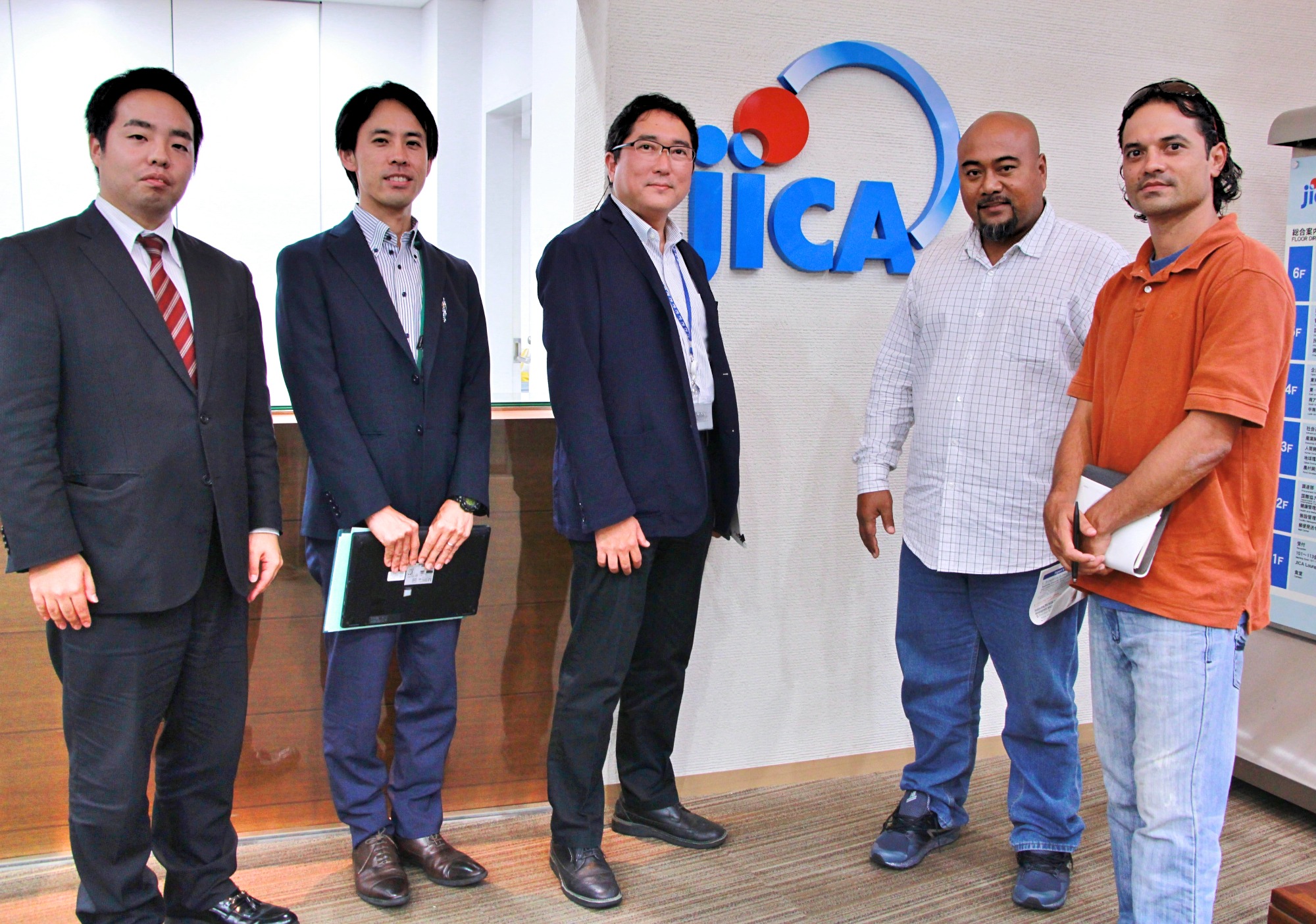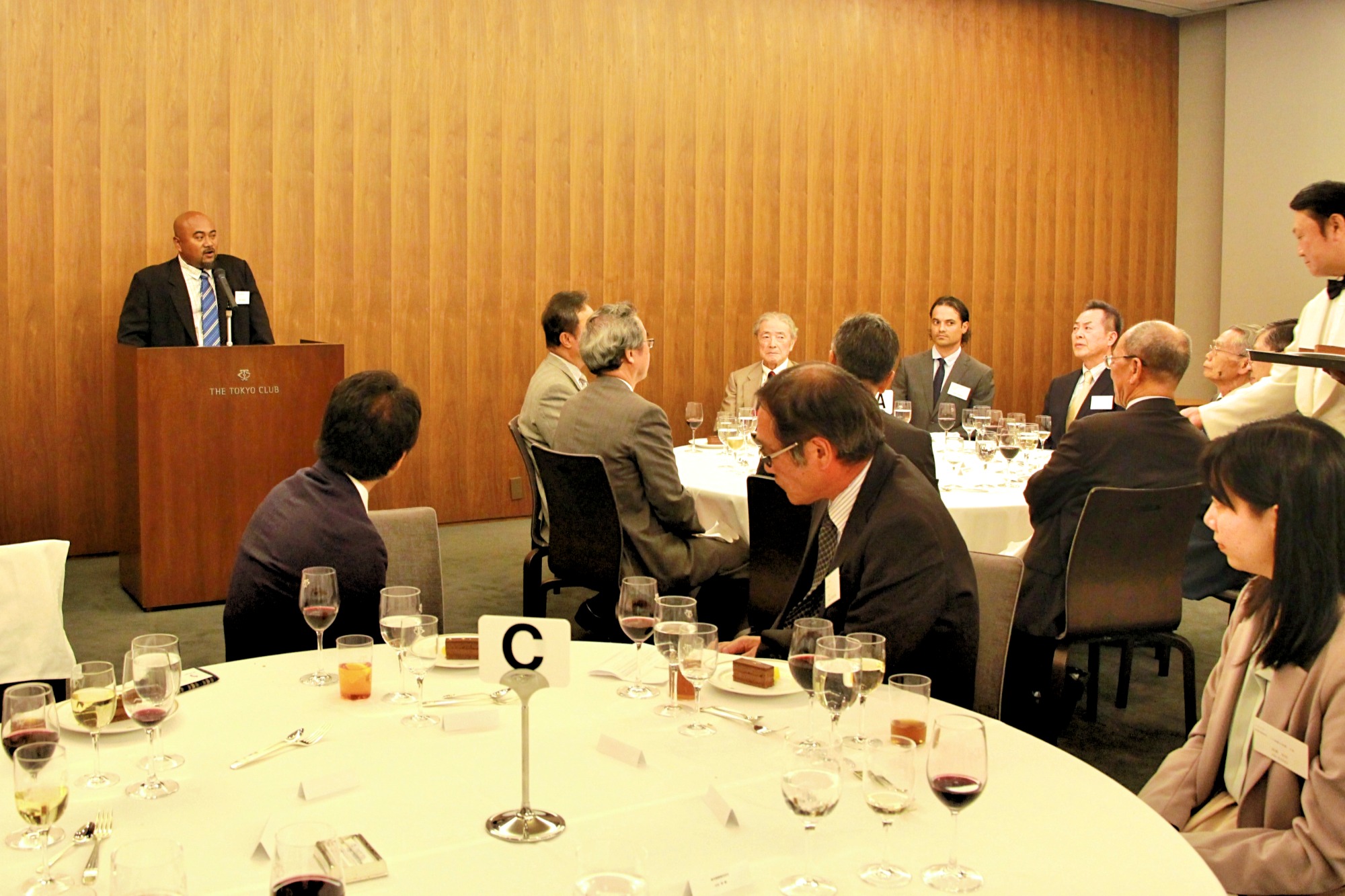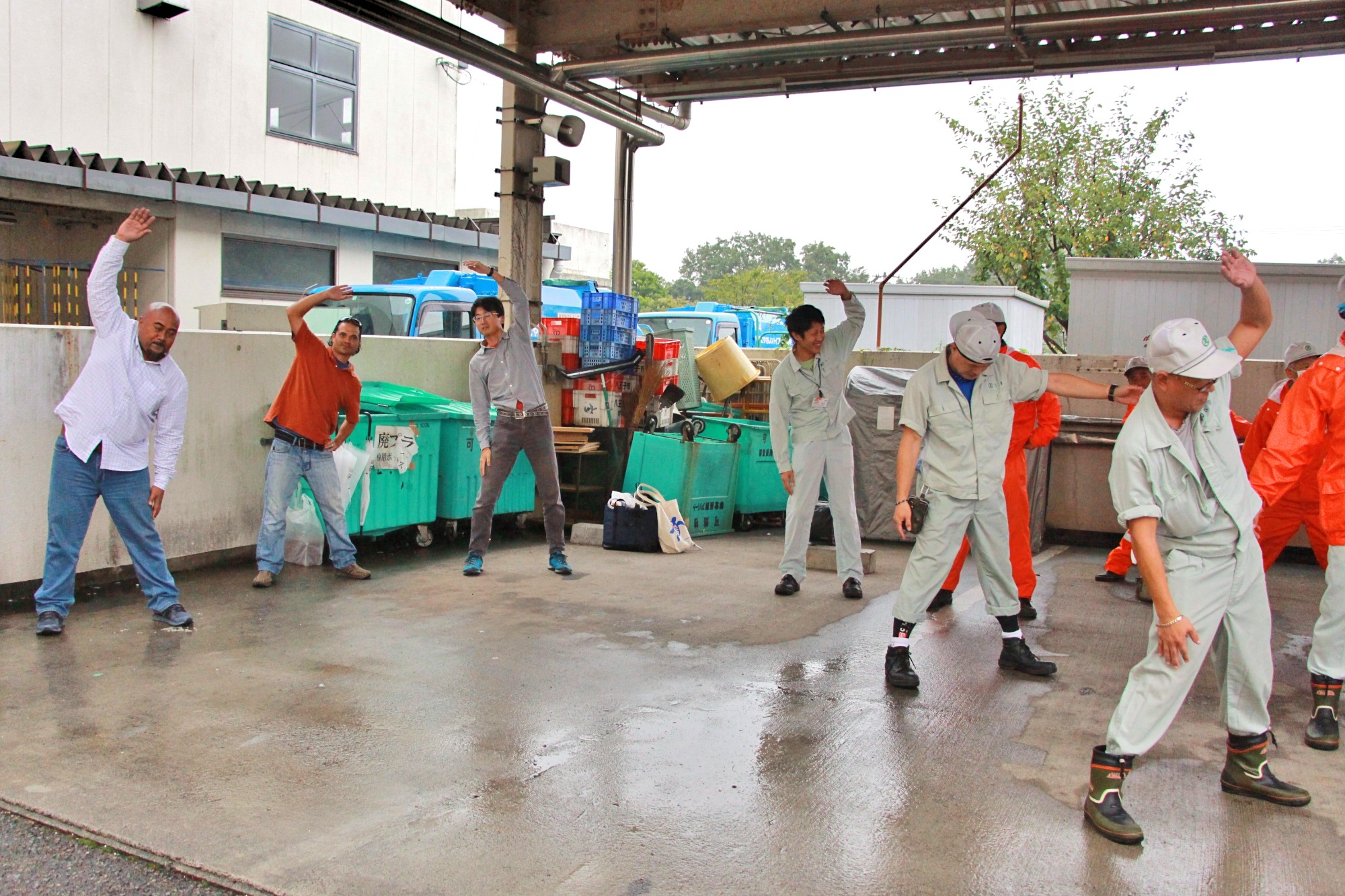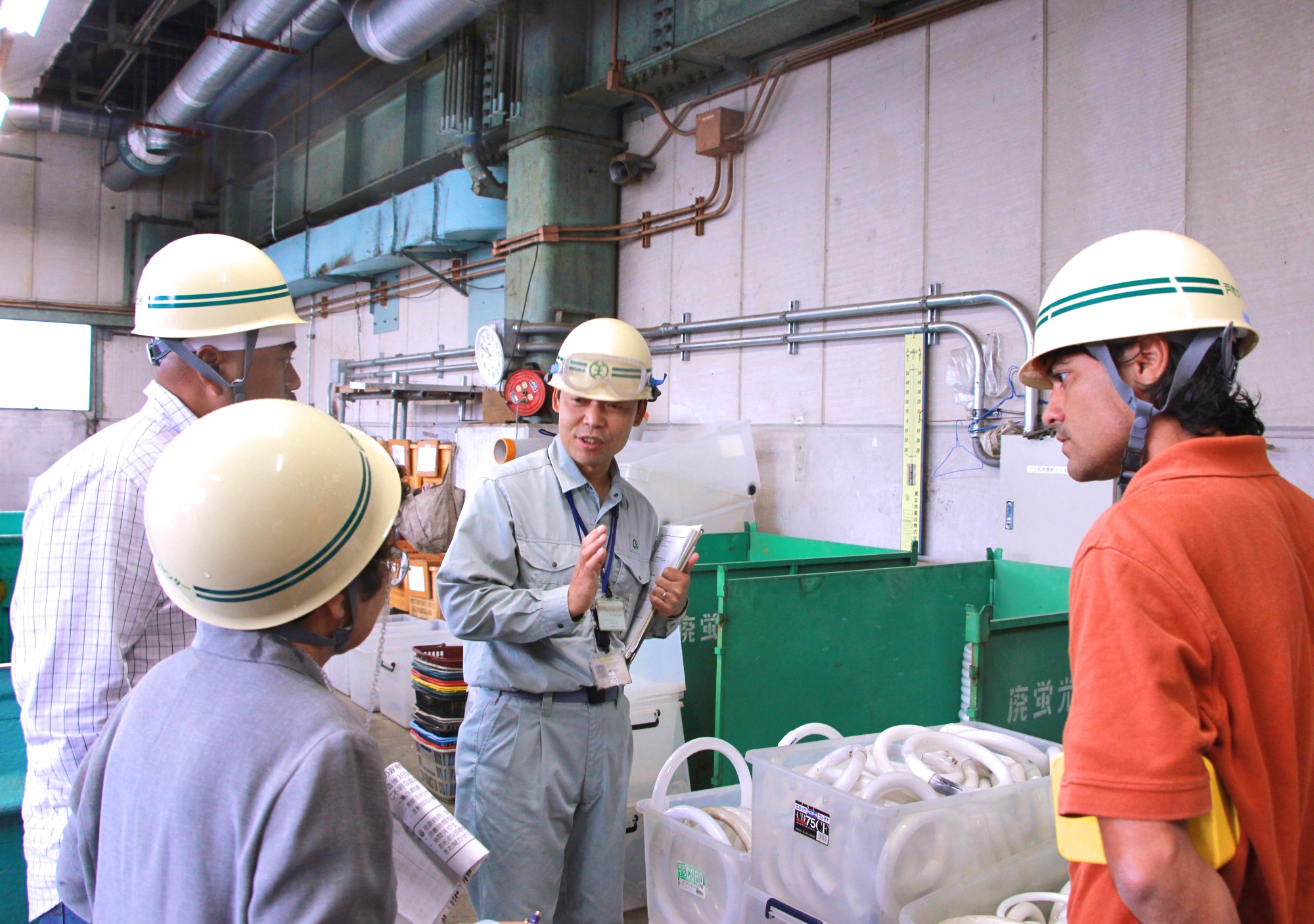Pacific Leaders Invitation Program: Federated States of Micronesia Chuuk State Young Leader Invitation Program II

(At JICA. Director Akapito of the State Conservation Board (second from right), and stepping in for the Director-General of the State Marine Resources Department Mr. Graham (left))
On the 24th, the group went sightseeing around Tokyo, including Tsukiji fish market, Edo Tokyo Museum, the Imperial Palace, Tokyo Station, Ginza, the Shibuya crossing, and other sites, enjoying their time in Tokyo.
◆Visit to Renkoji Elementary School, Tama City
On the 25th, Mr. Graham and Mr. Akapito visited Renkoji public elementary school in Tama city, Tokyo. Both men are deeply concerned about the current condition of public elementary school education in Chuuk, and actively asked questions regarding maintaining educator quality and creating school curriculum. They displayed interest in the school’s advanced and interactive educational environment, and their “open school” approach which aims to tie the community and school together.
Renkoji elementary school principal took a keen interest into Micronesia’s environmental conservation efforts, making a promise with the two visitors to send photos of each other’s school buildings and grounds and to send videos of students studying, playing, etc. to give the students a new type of global teaching materials.
◆Dinner Hosted by APIC
On the evening of the 25th, President Sato of APIC hosted a welcome dinner for the two men at the Tokyo Club. The Micronesian Ambassador to Japan, Mr. John Fritz, as well as employees from visiting destinations in Hachioji city were also in attendance. The two young leaders thanked the audience for receiving the invitation to visit Japan.

(Director Akapito giving a speech)
In the morning of the 26th, they visited the waste disposal facility in Hachioji city, and participated in the city’s training program. Hachioji is supporting Chuuk state in collaboration with JICA (Japan International Cooperation Agency). The training program was based on this agreement with JICA and Hachioji city. The program consisted of the morning meeting, radio exercises; at the discussion afterward they commented that “even if we change the laws and system, the issue is changing the residents’ awareness, which must be solved not from the top down, but from the bottom up”.
Program Itinerary
1. Morning Meeting & seeing of the garbage collection trucks
2. Lecture introducing Hachioji’s garbage collection efforts
3. Site visitation
4. Discussion lead by Soka University Economics Faculty Associate Professor Takehiro Usui
After the program in Hachioji, Mr. Akapito and Mr. Graham received a briefing at JICA’s headquarters regarding Japanese support to Micronesia. JICA gave explanations on current Micronesia-Japan projects, and talked about past projects as well.


(Participating in the Hachioji training program)
On the 27th, they visited the Tokyo Sewerage Museum ‘Rainbow’, which is a free facility for the public to learn about the inner workings and importance of Tokyo’s sewerage system. While getting to know Tokyo’s sewerage system on a deeper level, they were also informed about the facility’s environmental education program aimed at elementary and middle school students.
They commented that “no matter how each of us explains the importance of awareness and change of action to protect the environment to the children of Chuuk, nothing will change if the children themselves do not understand why it is so important and what changes will happen”. They said that changes will occur in children’s behavior if Chuuk had a facility such as the ‘Rainbow’ museum where they can improve their understanding in an interactive manner.
On the 28th, they visited the Honjo Fire Prevention Museum and experienced heavy rain and winds and other natural disasters, and learned about Japan’s measures to protect against natural disasters.
WHAT'S NEW
- 2025.1.12 UPDATE
PROJECTS
"Barbados A Walk Through History Part 15"
- 2024.12.4 UPDATE
PROJECTS
"Barbados A Walk Through History Part 14"
- 2024.9.17 UPDATE
PROJECTS
"Barbados A Walk Through History Part 13"
- 2024.7.30 UPDATE
EVENTS
"408th Lecture Meeting Regarding Global Issues"
- 2024.7.23 UPDATE
PROJECTS
"Barbados A Walk Through History Part 12"
- 2024.7.9 UPDATE
ABOUT
"GREETINGS FROM THE PRESIDENT JULY 2024"
- 2024.7.4 UPDATE
EVENTS
"APIC Supports 2024 Japanese Speech Contest in Jamaica"
- 2024.6.27 UPDATE
EVENTS
"407th Lecture Meeting Regarding Global Issues"
- 2024.5.21 UPDATE
EVENTS
"406th Lecture Meeting Regarding Global Issues"
- 2024.5.14 UPDATE
EVENTS
"405th Lecture Meeting Regarding Global Issues"




